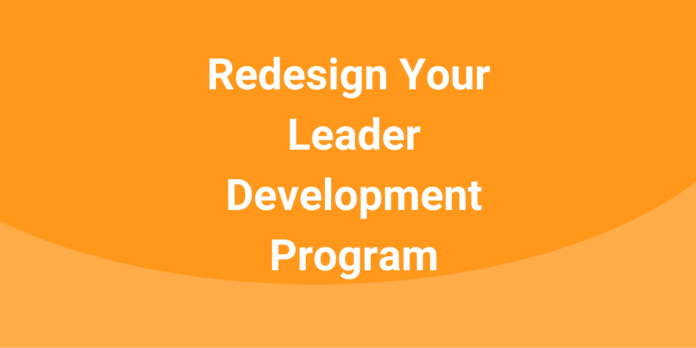
“Never let a crisis go to waste” is a somewhat cold but very wise saying. And I’ve been surprised at just how many heads of leadership development programs are using this unique time in our lives to proactively redesign their programs, even when they don’t have to.
Last week I was on the phone with the CHRO of a company with 50,000 employees and I was puzzled at their timing.
“Your company is financially healthy, you moved your in-person classes to Zoom, the work-from-home rules will be relaxed very soon, your budget hasn’t been cut, why are you redesigning front-line manager training?”
“To make the program more agile and resilient for what’s to come,” she answered.
“And what do you think is coming?”
She replied, “We don’t know. And that’s the point. Work-from-home orders may come and go for the next year or longer until there is finally a vaccine or treatment. The economy may have a V-shaped recovery, or we may have a deep recession or even worse. And let’s be honest, how much of what we’ve been teaching our managers do they ever actually apply? We can do better, and we can be better prepared for the future.”
In times of uncertainty, it’s time to get agile and resilient.
Agility: able to move and change directions quickly.
Resiliency: the capacity to recover quickly from new obstacles and setbacks.
Making your leadership training programs agile and resilient goes far beyond learning how to conduct training via Zoom. To truly create a world-class program, you can use the “5 Ws” framework originated by Aristotle and often taught in journalism classes. Of course, the 5 Ws stands for Who, What, Where, When, Why. And usually, there is a sixth element added, How.
- Who: who will be part of your leadership development programs? Front-line managers? Middle and senior executives? What about the individual contributors who have management potential? Should you be giving them growth opportunities to engage them and make sure they are leadership-ready on the day when they get promoted into the position? Should all employees receive some form of leadership training in the spirit of everyone is a leader? Who should you be partnering with (e.g., content providers, technology providers, senior executives)?
- What: what content will you train? What methods will you use? Is your current curriculum filled with fundamentals (e.g., critical conversations, delegation, situational frameworks) but ignores your leadership competency model? Or do you train on the competencies, but not on the very real drivers of employee engagement like giving recognition or building trust? What should new managers be trained on? What about middle managers? What about senior execs? (Circling back to the “who”.) What instructional strategies will you use (e.g., lecture? Group coaching cohorts? Simulations? Virtual reality?)
- Where: where will the training take place? Perhaps more relevant than ever, will the training be delivered remotely, or in-person? If virtual, will it take place “in” Zoom, or Microsoft Teams? What are the advantages and disadvantages of each? If in-person, is it more agile to bring all participants to the home office, or to bring the instructors to regional locations?
- When: when relates to all calendar and scheduling related items. When will your new manager training program be offered (e.g., quarterly)? (And what do you do with newly promoted managers who might have to wait 90 days before they get any help?) What is the cadence of your program? Will you still cram everything into two days? Will you focus on one topic per month for six months? Will you create an annual “always-on” program with one topic per quarter?
- Why: why does your program exist? Is it to avoid harassment lawsuits and worker grievances? Is it to maximize team productivity? Is it to maximize employee engagement? Is it to maximize team resiliency? Beginning with the end in mind, as Covey famously said, will guide so much of your redesign. Why do you even have a leader development program? What do you want the leaders to do when they are done? What should their behaviors be?
- How: how will you measure success? This is the single biggest gap I see in today’s leadership programs. How do you currently know if the program is working? I’m not talking about whether they liked the program or not. I’m not talking about whether they can pass some kind of test. How do you know if they are applying the leadership behaviors you trained them in? How do you know if their teams are productive and engaged? If you have carefully answered the 5 Ws, then all you need to do is track progress–and hold your team accountable–by measuring true results. You know, the results your CEO would care about.
Now is perhaps the best time to redesign your leadership development programs, if perhaps for no other reason than that senior leadership will understand the necessity for it; you will be able to capture their attention with your efforts to be agile and resilient. Use the classic 5 Ws and How to make sure you have thought through your new design, and can present it clearly.







